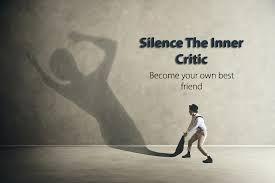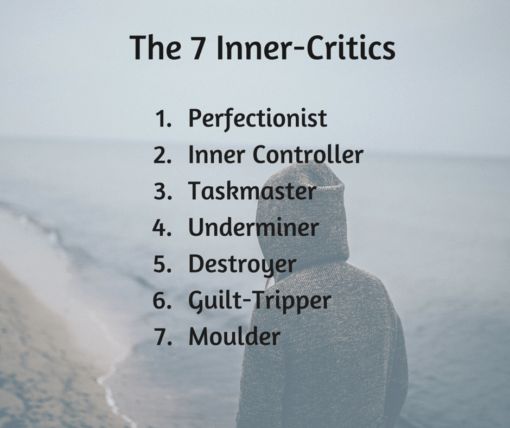How To Teach Your Kids About Their Inner Critic
May 05, 2019 • 8 views

How to Teach Your Kids about Their Inner Critic
Kids need ease and fun when it comes to difficult tasks like challenging negative self-talk, says Dr. Hazel Harrison. She introduces “The Critical Critter” for exploring self-critical thoughts with your child.

Have you ever heard your child say something like: “I’m not good at this,” or “I’m so stupid,” or “It’s all my fault,” or even “I shouldn’t have even tried.” Perhaps some kids don’t say these things out loud, but maybe they refrain from doing certain activities or speaking up in school because they’ve already convinced themselves that they’re not good enough. Over time, these behaviors can grow into what we all have come to know as the inner critic.
For kids, however, I like to refer to the inner critic as “The Critical Critter” to take some of the weight off. Exploring self-critical thoughts can often feel like heavy, exhausting work, so using a playful approach can help children bring a certain amount of lightness to balance out the heavy work of noticing unhelpful habits and challenging them or approaching them differently.
The character of the inner critic as “Critter” helps children understand when they are being too hard on themselves and also the crucial lesson that thoughts are not facts. Just because we think we’re rubbish at something doesn’t make it true.
So how do you start a conversation with your children about the self-defeating, self-critical thoughts that we all have running on repeat in the back of our minds?
Here is how I help children (and parents) to understand the inner critic.
Introducing the Critical Critter
Having introduced the idea of thebrain house, I tell children that we’re going to add in a rather scary, hairy, and un-fairy-like creature. You know your child, so make sure this makes sense to them. Some children may need lots of reassurance that this is just pretend — “there aren’t really characters living in our brain” — whilst others may relish the opportunity to run wild with imagination.

The Critical Critter in the Brain House
The Critical Critter lives in the upstairs brain house with the thinkers, problem solvers, planners, emotion regulators, creatives, flexible and empathic types in the neocortex. To begin with, we may not notice that the Critter has moved in. It may start out with a quiet voice, occasionally speaking up with critical self-talk. But, the more we listen to its words, the bigger it grows. The Critical Critter is fed on a diet of negative self-talk and unkind, unsupportive words from others. Each time we chew on harsh and unjustified criticism, it’s like giving the critter another burger to munch on. One day, we discover the Big C has unpacked all its luggage, and grown large enough to throw its weight around. The Big C has turned into a BIG BULLY, squashing any hopes of self-compassion or kindness from the upstairs “thinking” characters. And, not content with that, this dastardly doubter is also lurking downstairs in our feeling brain (the limbic system), telling Fearsome Fred that he’s right to panic and flip his lid because everything is going to go wrong. And when it does, insists the Critter, Fearless Fred will be to blame because he’s useless. We. Are. Useless.

Notice the Critical Critter in Action
Think of some examples to share with your child about what else the Critical Critter does. Choose examples that aren’t too stressful because if you make your kids feel too anxious they may end up feeding their Critter right then and there!
Here’s an example I might use:
At age seven, our internal critic bursts into fits of self-incriminating giggles when we trip during a race.
Aged 16, it hides under the exam desk and repeatedly whispers “You’re gonna fail at this!”
When it’s time to leave school and think about a career, the Critter starts a chorus of “You’ll never do it; you’re not going to make it; you’ll never amount to anything.”
In short, the Critical Critter makes us default to feeling bad about ourselves, feeling ill-equipped, emotionally and mentally, to handle adversity or even to simply to try new things. Learning how to quiet the Critter can help childrencultivate resilienceand self-compassion.

5 Ways Kids Can Shrink the Critical Critter
If your child’s Critter has grown bigger, scarier, and hairier recently, it’s time to put it on a crash diet. Here’s how you can help your child notice the Critter at work and put an end to its constant unhelpful chatter:
1) Ask your child to name their critter:This may sound a bit silly, but it gives your child the space to separate the words and actions of the critter from their own and notice when the inner critic is at work. This gives them a better chance of taming harsh words (and catastrophizing thoughts) that eventually build into habits of rumination. It doesn’t matter what they call the Critter, just as long as it makes sense to them.
2) Take the BFF test:You might notice the Critter creeping around your child on tough days. They start being really hard on themselves — “It’s all my fault we lost the game.” When you spot this ask them: “Would you speak like this to your best friend?” If the answer is “no,” it’s time to squash that negative self-talk, encourage them to be their own BFF (Best Friends Forever). Ask them to think about what they would say to a friend in a similar position, and also HOW they would say it. Regularly practicing this exercise will help them to take responsibility for their actions whilst also building self-compassion.
3) Answer back:You may spend a lot of time encouraging your child not to answer back, but when it comes to the Critter, they need to boss them back. When you notice the Critter sneakily chanting to them “This’ll never work, you’ve always been useless at this,” encourage them to answer back. Use these sentences and their Critter will be eating broccoli for a week!

“That’s enough out of you, Critter — I’m doing my best.”
“I can’t hear you Critter, I’m too busy being amazing over here.”
“Maybe it didn’t work this time, Critter, but I’m giving it another go.”
4) Call for Backup:If your child is trying to master something new, maybe a difficult math concept or a new skateboard trick, these are often the times when the Critter will pop up. Critters tend to say things like “you’re terrible at this,” or “You may as well stop right now.” Encourage them to prove the Critter wrong by seeking the advice and support of people who have done it before. If they surround themselves with people who say “You can do it,” then it’ll be harder for the Critter to keep yelling at them to give up. And soon, it will stop shouting “You can’t,” and sit quietly in a corner.
5) Create a positive moments practice:Being under attack from the Critter is tough and, for some kids, can feel relentless. It can make kids question themselves and their abilities. To cope with this relentless criticism, it’s important that kids find things about themselves that they like. Each day, help your child find time to notice the things — no matter how small they are —thatwent well because of them. Ask them what went well today and help them to find the positive moments in their day. Encouraging a regulargratitude practiceis a great way to build resilience, self-compassion, and to keep the Critter quiet!
